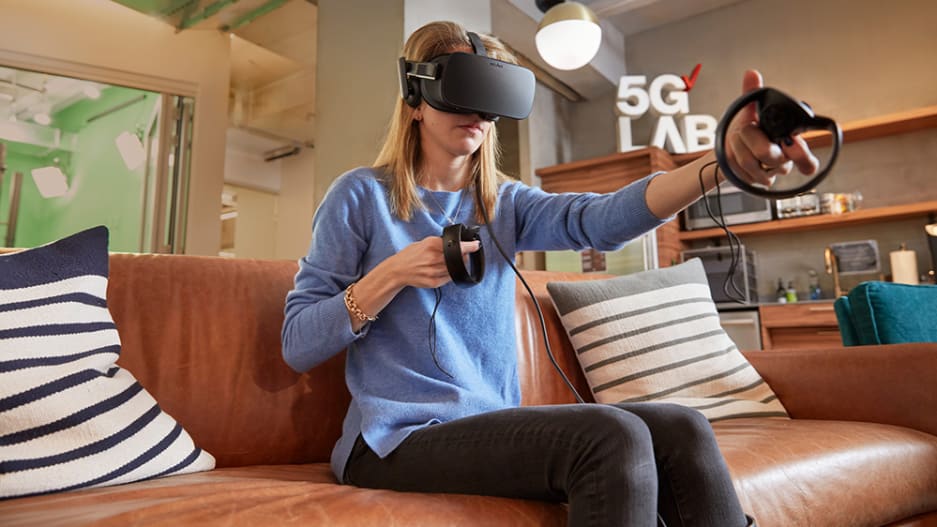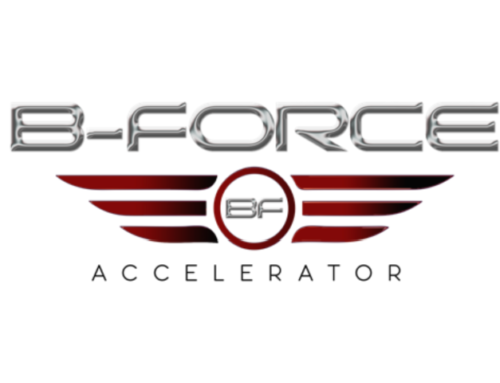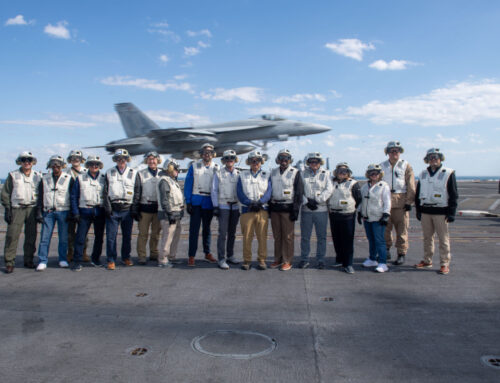Startups, universities, and entrepreneurs are aiming to reshape entire industries at Verizon’s 5G Labs. Here’s a peek at what that looks like.
Like many innovative breakthroughs, it all started by addressing a pain point. Joe Weaver, the CEO of Ario, and his team recognized how augmented reality could increase productivity, reduce downtime, and provide real-time knowledge and information relevant to employees in the energy, utilities, and manufacturing fields.

“While I was working at the shipyard in Newport News, Virginia, it became abundantly obvious that having relevant information when and where people are actually working could revolutionize and standardize the way these often complicated processes and procedures are completed, helping to increase employee accuracy and confidence,” Weaver explains.
So, starting in 2018, Ario developed a new platform that conveyed vital information—including checklists, photos, videos, 3D models, and the like—to employees’ workstations via AR.
Business grew swiftly. Still, Weaver understood the need to push the boundaries of visualizing and sharing information and data in real time. “A lot of our clients were looking to digitize solutions, but ensuring they have strong enough internet connectivity can be a challenge,” he says.
Enter the Verizon 5G Labs. Weaver and his team submitted their use-case proposal to Verizon’s “Built on 5G Challenge,” a contest dedicated to bringing the power of 5G to life while solving a customer’s most challenging problems. Ario’s proposal was not only accepted—it also won the $1 million top prize to further develop the platform.
Soon the Norfolk-based team was hunkering down at one of Verizon’s 5G Labs for what Weaver describes as “pretty much a boot camp of what 5G can do.” Following entrepreneurial mentorship and work with 5G specialists, Ario leveraged the fast speeds, massive bandwidth, and super-low latency that Verizon’s 5G Ultra Wideband network offers to develop an upgrade to their commercial platform so their app can deliver large interactive 3D experiences in real time. This means that employees using the Ario app connected to the Verizon 5G Ultra Wideband network will someday be able to access remote expert guidance and real-time integrated information for spatial documentation with minimal lag. Weaver says the new communication tool “will give our customers far better performance and really decrease downtime.”
PRAGMATIC APPLICATION
Verizon collaborates with universities, startups, and enterprises at its six 5G Labs across the country (plus one in London). The goal: to create viable 5G concepts and reshape entire industries through transformational experiences.
According to Sanyogita Shamsunder, vice president of 5G labs and innovation, the framework originated a decade ago with 4G Innovation Centers in Boston and San Francisco, where Verizon helped early IoT developers build and test products. As 5G technology matured, Shamsunder recognized an opportunity to apply the same support for a new generation of entrepreneurs.
The first 5G lab, which Shamsunder describes as “a sandbox” in New York City, allowed developers to work freely and start talking about 5G and its capabilities. “We quickly realized there was so much interest and engagement we needed to scale it to other locations,” she says. “We needed to serve local innovators and make 5G and mobile edge-computing capabilities available and easy to get to.”
Verizon aligned the labs to locales where innovative sectors were concentrated, using the Washington, D.C., area as a template. “There’s a lot of government, education, public safety, and public sector startups there with an innovation ecosystem around it,” Shamsunder says. “So we took that concept and replicated it.”
DAZZLING POSSIBILITIES
Today, more than two years later, the innovations that have been nurtured in Verizon’s 5G Labs are potentially revolutionary:
- By tapping into the robotics, healthcare, and networking ecosystem in the Boston area, the Verizon 5G Lab in Cambridge, Mass., in conjunction with the University of Massachusetts, Lowell, helped to develop a miniature humanoid robot that can be remotely controlled in near real time and could be used to aid in disaster response. The robot’s “eyes” transmit video data to its human operator, who can adjust its stride. This could someday be used, for example, to navigate debris to deliver food, water, and supplies to victims until first responders can safely access the area.
- In the New York 5G Lab, a computer-vision experiencefocused on augmented reality harnesses the incredibly fast object recognition enabled by 5G, which could someday help shoppers make informed purchase decisions. The experience simultaneously compares prices and reviews product and star ratings, along with ingredients and allergens, across multiple items in a single screen shot. (The experience on 4G is limited.) The next step on the horizon: to transition the experience from mobile devices to smart glasses, where the information appears passively within one’s line of vision without having to pull out a phone.
- Using Los Angeles as its hub of next-generation content creation (whether VR, film-TV, or gaming), Verizon partnered with Dignitas to launch the nation’s first 5G e-sports training facility, the Verizon 5G Gaming Center. Located within the Verizon 5G Lab, the 5,500-square-foot state-of-the-art center features a 20-person stage and will serve as Dignitas’ West Coast headquarters as well as home to its League of Legends teams. Meanwhile, work at the Lab will focus on identifying and developing ways that Verizon’s 5G Ultra Wideband network can enhance player performance, improve recovery, and enable players to connect with fans in new, innovative ways.
“I think all sectors of the economy are well-suited [to gain from Verizon 5G Ultra Wideband],” Shamsunder says. She cites the field of education and the potential of harnessing 5G’s higher bandwidth to create new types of immersive content to help improve learning and retention. “There’s a lot of research saying that when you’re in immersive virtual reality, the engagement and knowledge retention is much better than just reading about it in a book or even watching a video. You’re actually able to feel what you’re supposed to be feeling.”
Thanks to the kind of 5G support Verizon is providing, entrepreneurs can better understand what their innovations will look like in practice. “For us, in winning the 5G Challenge, not only were we obviously thrilled to have won the million dollars, but we can now also see what the future of 5G will enable,” Ario’s Weaver says. “The Lab really pushed the boundaries of what we theoretically thought was possible. But not until we actually experienced the network, were we able to understand what already is possible.”






